Media | Articles
4 tips for when your car won’t start away from home
With a Thermos full of warm coffee in the passenger seat and the burble of a 1275-cc four-cylinder in front of me, my Saturday morning was off to a great start. I steered my new-to-me little blue Austin Healey into a gas station to top off the tank before heading home. When I went to start the engine after fueling up, it cranked and cranked, but no fire.
This car has been generally reliable, starting every time I turned the key during my few months of ownership. After the third turn of the key without hearing the engine sputter to life with that signature British burble, it was clear the Healey had a problem.
In the end I managed to drive the car home. How did I avoid the tow truck? Check out these tips for how you can remedy basic trouble on a future drive.
Be cognizant of your battery
In past instances that I’d experienced a no-start condition like this I cranked, cranked, and cranked the engine some more, just trying to will the car to start. Wrong thing to do. Once you have realized that it is not starting like it should, don’t touch the key again until you change something. Seriously. Sit back and think, rather than idiotically spinning the starter until you have a dead battery. A car that doesn’t start for two reasons is even worse.
This tip is especially important for cars equipped with big engines or small batteries. You only get a finite number of tries before you battery won’t have the juice to spin the engine over or fire the ignition. You could pivot to push-starting at that point, but diagnosis while pushing starting is very difficult.
Marketplace
Buy and sell classics with confidence
Take a scientific approach
You’re stuck, so take that time to think through the process of how an engine starts. Fuel, air, compression, and spark. Lift the hood and start investigating everything you can without turning the engine over. Does pumping the throttle shoot raw fuel into the engine from the carburetor’s accelerator pump? Is there a blockage of the air cleaner?

In my instance, I checked the clear fuel filter while the key was switched on to activate the electric fuel pump. Fuel was flowing, but after a handful of tries to start the engine, I was beginning to think I might have flooded the engine with fuel. The engine was not even trying to start. No random cylinders firing or catches that could have kicked the starter drive out. I had fuel and air, and if I lost compression while pumping fuel it would have been a special kind of British car miracle. That left one option: ignition problem.
Look around for help, and not just from people
Like a rookie, I left the house that morning without any tools. Zero. Meaning I was going to have to get creative about the diagnostic process if I was not able to disassemble anything. In order to find out if I was having a problem with weak spark rather than no spark, I started by making sure the battery cables were tight. They were. Then, realizing I was at a gas station, I went inside and bought the combustion equivalent of a Band-Aid—starting fluid.
Before you skip straight to the bottom of this article and write a comment, hear me out. There was no one at this particular station at the hour I was there, so having someone crank the ignition while I was underhood (trying not to electrocute myself while holding a plug wire to see if it arced to the plug or engine block) was not an option. The next best thing was to create a situation within the engine where combustion would occur with pretty much any spark at all.

Now then—couple quick shots down the air cleaner snorkels later, I leaned over the low door to turn the key. No dice. This meant I likely had ignition trouble. Luckily, the Healey’s four-banger has a distributor cap easily removed by hand, so I pulled it off and inspected for any carbon tracking or other signs of faulty operation. Nothing weird there. Next item to check was the points—an area plenty of folks might have jumped to right away.
Get creative
The faces of my ignition points were charred and gray. I could have made it home by giving them a scuff, but I had nothing on my person that could be used for scuffing. I walked around the gas station staring at the ground looking for something to use and even asked a few folks who pulled through the pumps. “Could I borrow a nail file for a minute?” is a great way to be labeled a crazy person, but it would have solved my problem in no time.
Finally I declared defeat, pulled my phone from my pocket, and called my fiancée who was anxiously awaiting my return to start some home renovation projects. I told her where I was and asked her to please bring a nail file. A few minutes later, after enduring the “I can’t believe I had to rescue you again” look, I was able to give the points a few draws with the nail file. With a turn of the key, the humble four-banger fired right to life.
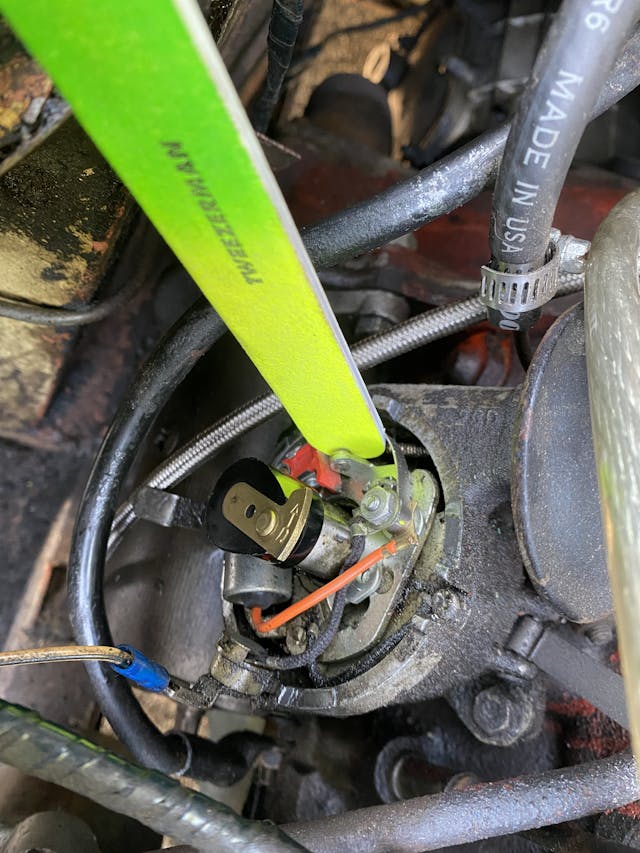
Now the car is home, and I need to at least adjust the points—probably better to replace them completely. I would have loved for this to be a story of me sorting my problem with nothing but wit and ingenuity, but at least all it cost me was a phone call and a favor. Having to call for reinforcements before I could declare victory is miles better than defeat.

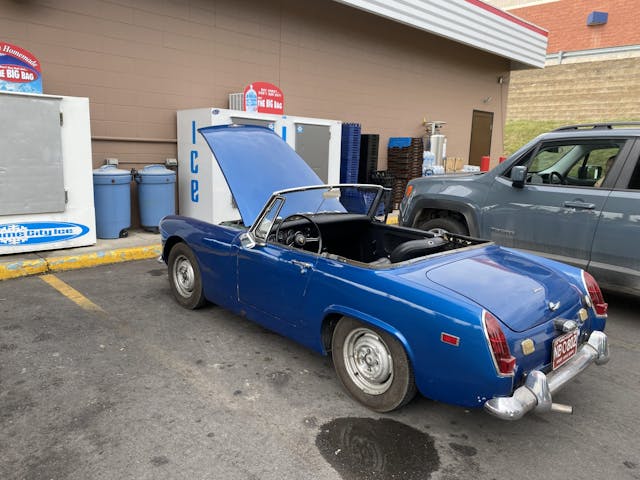
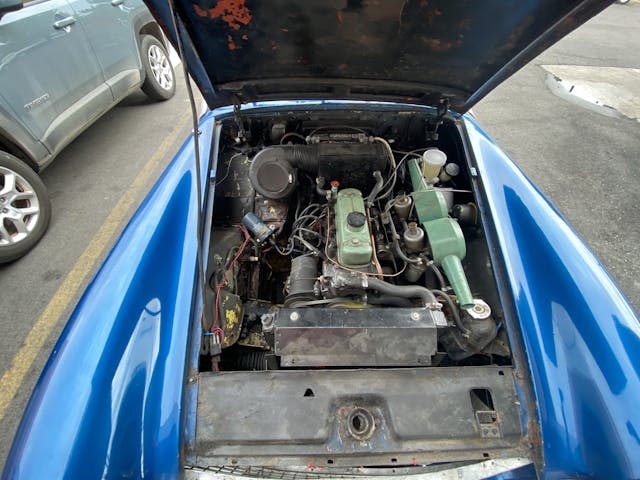





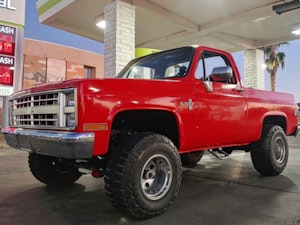











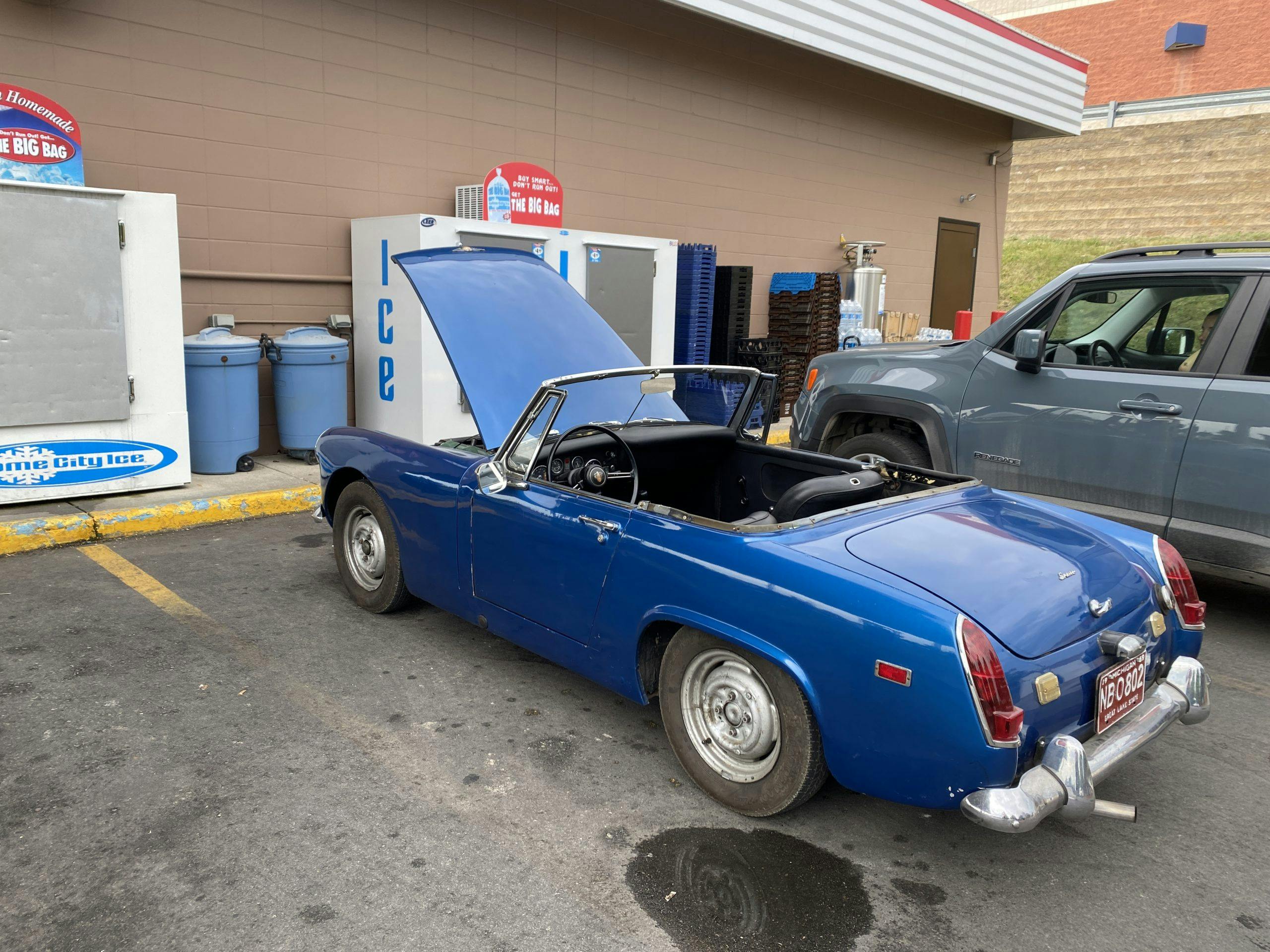
Alternative points file = if you don’t carry a swiss army knife (I always due now), then reach into your pocket for one thin dime. It worked for me on my 1963 Chry New Yorker and got me the rest of the way home (250 mi).